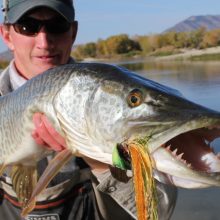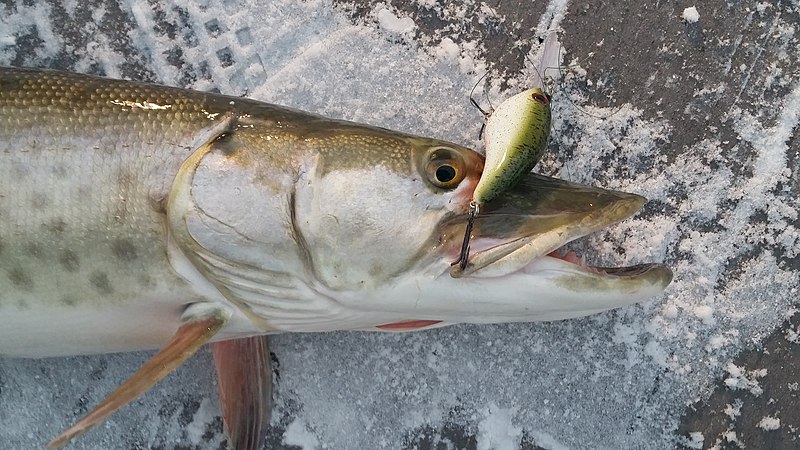This article may contain affiliate links. If you make a purchase after clicking on a link we may earn a small commission at no extra cost to you. As an Amazon Associate, I earn from qualifying purchases.
Tiger Musky Teeth

Being one of the biggest freshwater fish in the US it’s of little surprise that a Musky’s teeth are one of it’s most notable features.
With a massive jaw, long torpedo shaped body, and massive rear fin the musky is one of the to predator freshwater species in North America.
If you have ever caught or seen a musky in the flesh then you probably agree that the teeth are some of the biggest and intimidating of anything you are likely to catch in freshwater.
Row after row of sharp teeth adorn it’s mouth with the sharp canine’s that line the outer edge of the jaw being the most impressive.
Muskie fishing line needs to be heavy for a reason and a lot of anglers will use a heavy wire trace as their leader purely because of just how sharp those razor like teeth are.
Musky Teeth
Musky are ambush predators and like all large fish or animals that have evolved to be near or at the top of the food chain in their environment musky have a very well developed set of teeth that are designed for catching prey.
A muskies head has a flat, duck-billed shape that is designed for grabbing it’s prey and then swallowing it head-first.
Each type of tooth performs as specific task.

The main teeth that are used when hunting are the large canines that can be found on the outer rows of both the upper and lower jaw.
A musky will generally ambush smaller fish. As it strikes it can open up it’s large flat mouth a considerable distance giving it the ability to attack larger prey that can be up to 20% of it’s own weight.
Also Read: Northern Pike vs Muskie
The roof of the mouth has mush shorter almost brush like teeth that are used to help grip it’s food as it tries to swallow.
Unlike some other larger saltwater predators such as sharks the muskies jaw and teeth are not designed to take large bites out of it’s food. Instead the teeth are designed only for grabbing.
Once a musky catches it’s prey in it’s canines it will use the rest of it’s teeth to grip the prey and turn it so as to swallow it head first.
It turns it’s food to a head first position as it is easier to swallow this way. And when swallowing smaller fish such as perch and walleye it can flatten down the dorsal fins that contain sharp spines.
How Many Teeth do Musky have ?
This will vary greatly by age and size. Most muskie have probably hundreds of the smaller brush like teeth that they use for gripping it’s prey as the swallow them.
The number of larger canines in the mouth can vary. You can usually find that the much larger older fish will in fact be missing quite a few of their main teeth. They probably break off due to age and use.
It’s not uncommon to find really old musky that are missing a lot of their teeth from the front of the jaw, the smaller brush like teeth do seem to fair better.
